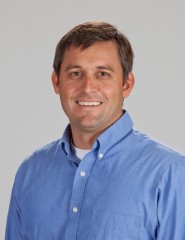Team Identifies Important Regulators of Immune Cell Response

Photo courtesy of The Scripps Research Institute. Matthew Pipkin, PhD, is an associate professor at The Scripps Research Institute, Florida campus.
The new approach, published recently by the journal Immunity, could help accelerate laboratory research and the development of potential therapeutics, including vaccines. The method may also be used to identify the genes that underlie tumor cell development.
There are approximately 40,000 genes in each of our cells, but functions for only about half of them are known. The classical approach to determine the function of individual genes is slow.
“Typically, studies to identify differentiation players are done one gene at a time,” said Associate Professor Matthew Pipkin of TSRI, who led the study with Professor Shane Crotty of the La Jolla Institute for Allergy and Immunology. “Our study describes a novel method that can ‘screen’ entire gene families to discover the functions of a large number of individual genes simultaneously, a far more efficient methodology.”
In the new study, the team examined genes that regulate the specialization of T cells into “effector” cells that eliminate pathogens during infection and “memory” cells that survive long-term to maintain guard after the first infection has been cleared, keeping the same pathogens from re-infecting the body after it has fought them off once.
In their experiments, Pipkin, Crotty and their colleagues created a mixture of T cells, identical except that the expression of a different gene was interrupted in each cell so the pool of cells represented disruption of a large set of genes. The researchers then assessed the cells’ response to lymphocytic choriomeningitis virus (LCMV). Before-and-after-infection studies revealed which cells with interrupted genes had emerged after infection; cells in which disruption of a particular gene resulted in it being lost from the mixture indicated the gene played a role in promoting the cell’s development into an antiviral T cell.
The study successfully identified two previously unknown factors that work together during T cell differentiation—Cyclin T1 and its catalytic partner Cdk9, which together form the transcription elongation factor (P-TEFb). While widely expressed throughout the body and used in a number of developmental processes, the factors were previously unknown to be important in the differentiation of both antiviral CD4 and CD8 T cells.
“One of the regulators we uncovered normally enhances effector T cell differentiation at the expense of generating memory T cells and T cells that orchestrate antibody production,” Pipkin said. “That’s one candidate that you’d want to ‘turn down’ if you wanted to create more T cells that form memory cells and promote a more effective antibody response—something that would be extremely helpful in developing a vaccine.”
The first authors of the study, “In Vivo RNA Interference Screens Identify Regulators of Antiviral CD4+ and CD8+ T Cell Differentiation,” are Runqiang Chen and Simon Bélanger of the La Jolla Institute for Allergy and Immunology. Other authors include Megan A. Frederick of TSRI; and Bin Li, Robert J. Johnston, Nengming Xiao, Yun-Cai Liu, Sonia Sharma, Bjoern Peters and Anjana Rao of the La Jolla Institute for Allergy and Immunology. See http://www.cell.com/immunity/abstract/S1074-7613(14)00272-6
This work was supported by the National Institutes of Health (RC4 AI092763, R01 AI095634, R01 CA42471, R01 072543 and U19 AI109976) and Frenchman’s Creek Women for Cancer Research.
About the Scripps Research Institute
The Scripps Research Institute (TSRI) is one of the world's largest independent, not-for-profit organizations focusing on research in the biomedical sciences. TSRI is internationally recognized for its contributions to science and health, including its role in laying the foundation for new treatments for cancer, rheumatoid arthritis, hemophilia, and other diseases. An institution that evolved from the Scripps Metabolic Clinic founded by philanthropist Ellen Browning Scripps in 1924, the institute now employs about 3,000 people on its campuses in La Jolla, CA, and Jupiter, FL, where its renowned scientists—including three Nobel laureates—work toward their next discoveries. The institute's graduate program, which awards PhD degrees in biology and chemistry, ranks among the top ten of its kind in the nation. For more information, see www.scripps.edu.
Media Contact
All latest news from the category: Life Sciences and Chemistry
Articles and reports from the Life Sciences and chemistry area deal with applied and basic research into modern biology, chemistry and human medicine.
Valuable information can be found on a range of life sciences fields including bacteriology, biochemistry, bionics, bioinformatics, biophysics, biotechnology, genetics, geobotany, human biology, marine biology, microbiology, molecular biology, cellular biology, zoology, bioinorganic chemistry, microchemistry and environmental chemistry.
Newest articles

“Nanostitches” enable lighter and tougher composite materials
In research that may lead to next-generation airplanes and spacecraft, MIT engineers used carbon nanotubes to prevent cracking in multilayered composites. To save on fuel and reduce aircraft emissions, engineers…

Trash to treasure
Researchers turn metal waste into catalyst for hydrogen. Scientists have found a way to transform metal waste into a highly efficient catalyst to make hydrogen from water, a discovery that…

Real-time detection of infectious disease viruses
… by searching for molecular fingerprinting. A research team consisting of Professor Kyoung-Duck Park and Taeyoung Moon and Huitae Joo, PhD candidates, from the Department of Physics at Pohang University…





















